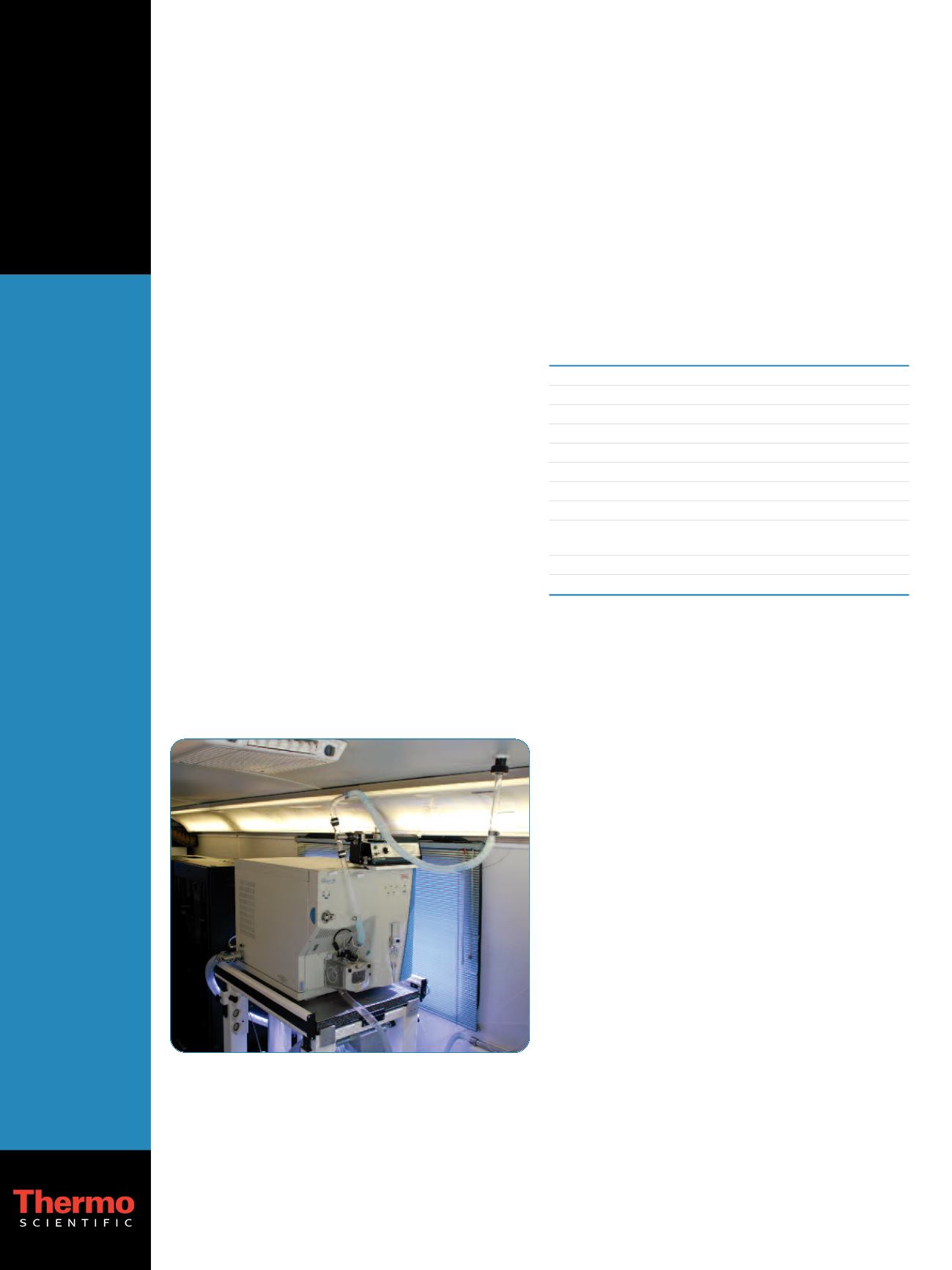

Quantitative Analysis of Environmental Air
Contaminants Using APCI-MS/MS in Mobile
Laboratories
Germain Tremblay, Lise Blanchard, Dominic Lortie – Ministère du Développement durable, de l’Environnement et des Parcs,
Laval, Québec, Canada; Calin G. Znamirovschi – Thermo Fisher Scientific, West Palm Beach, Florida, USA
Introduction
There are many potential hazards in our environment.
Chemical emissions, accidental chemical spills and fires
are of particular concern. A real-time analytical
atmospheric pressure chemical ionization-tandem mass
spectrometry (APCI-MS/MS) method for the quantitative
analysis of air contaminants has been developed using a
customized, direct-sampling APCI device coupled with a
Thermo Scientific TSQ series triple stage quadrupole mass
spectrometer. This method is critical for both
environmental monitoring in areas of steady or long-term
exposure and also for accidental or emergency instances.
In such situations, timely and accurate qualitative and
quantitative information on the types and levels of various
toxic chemical contaminants is required to evaluate the
hazard and prevent public exposure. Methods have been
developed for chemicals related to the ambient air quality
criteria, governed by the Ministère du Développement
durable, de l’Environnement et des Parcs (MDDEP) of
Québec, Canada. Criteria are illustrated in Table 1, for a
limited selection of contaminants. A TSQ Series triple
stage quadrupole mass spectrometer, with a customized
APCI device for direct sampling, has been used (Figure 1).
Figure 1: TSQ Series triple stage quadrupole with the ion source customized
for direct air sampling.
Table 1. Ambient air quality criteria for common contaminants (limits of
acceptance)
Limit Concentration
Limit of Detection
(maximum mean/4 minutes)
(MS/MS)
Compound
(µg/m
3
)
(µg/m
3
)
Acetone
8600
4
Acrylic acid
270
0.1
Ethyl-3-ethoxypropionate
300
0.02
Ethylacetate
20
16
Hydrogen chloride
1150
8
Methyl-ethyl ketone
740
6
Naphthalene
200
2
Phenol
160
0.4
Propylene glycol monomethyl
ND
1
ether (PGME)
Sulfur dioxide
1050
0.3
Triethylamine
22
5
Goal
1) To develop a rapid, on-site, real-time air analysis
method to identify and quantitate several common air
contaminants.
2) To demonstrate the advantages of using the Thermo
Scientific Ion Max source and tandem mass
spectrometry (MS/MS) for the detection and
determination of a selected range of atmospheric
pollutants.
3) To establish and validate methods for air quality
control programs, emission inventory and reporting,
compliance and enforcement.
Key Words
• Environmental
Monitoring
• TSQ Series Triple
Quadrupole MS
Application
Note: 493



















